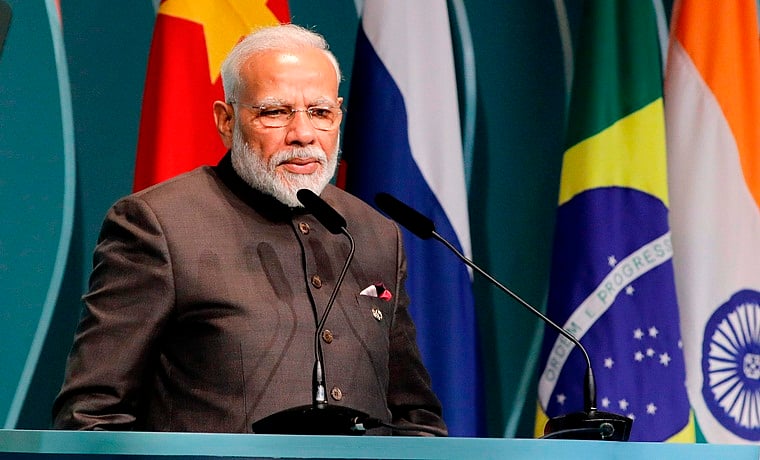First we shape our cities and then they (our cities) shape us! — Jan Gehl in his book Cities for People.
The city is the space between buildings — the gaps, the where you look up and see sky and look down and see pavement or earth or garden, or playfield, or garbage.
The quality of a city and the experience of life it promotes is often discernible in this space between buildings — what it is made for, who uses it and how much of it is actually there.
The city in the 20th century has always been described by its skyline; from the black-and-white client classic the metropolis, to the post-war modernist fantasies, to present-day financial capitals and the cities of the future. All imagined as silhouettes against a blue sky or a setting sun, with buildings glinting in the sunlight... glorious!
In these imaginations and impressions, there is no hint, no presence of anything animate or even alive — no humans, no animals, no trees. Even the occasional river of seascape is included as scaleless foreground for reflection or tonal quality.
The city is presented as the far away assembly of curious objects — glistening and celebrating humanity’s conquest over the planet and promise of bright, prolific and prosperous life.
It cannot be more distant from the truth!
I sit in the heart of the new Delhi as I write this. In the centre of South Asia’s Urbanising Dream, city of nearly 33 million people. It is staggering to even think of the number. What would 33 million people look like if they were to stand in an open field?
Where do these people live? What do they do in the city? Where do they go?Do they have children? Where do these children play? Are they safe? Where do they walk? Do they all have drinking water? Do they have access to health care? Do they have toilets? Do some have disabilities? Do they all have access to good education? Do they have access to affordable and healthy living conditions?
Where do they get their food from? Who grows their vegetables?
The aspiration for the sky has steadily disconnected us from the ground, the terra firma and in that distanced us from water, and ecological systems that sustain those millions of lives. Ecology turns to tokenism and as the landscapists call it softening of the urban scape!
The city is almost the antithesis of the planets’ systems in every sense!
Much as we would like to believe the contrary, our cities of today trace their lineage back to the worker cities of the industrial revolution. Far fancier, and expensive to live in and maintain, but their purpose remains quite the same.
Our lives have become navigations in the spaces between these buildings - where the spaces left are merely embellished conduits meant for logistics - the transportations of people and commodities from once glass tower to another in the most efficient way! The city is almost completely transformed into a machine to generate profit, and nothing else.
Roads, over roads, supplemented by aerial and subterranean rail, taking people from towers they sleep and wake into towers they work and eat in and back. Supported by systems to pump cleaned air into these towers to keep the millions alive and other systems to extract excreta and waste and dump them into distant dead landscapes or almost dead rivers. With a scattering of spaces for distraction on the weekends.
And you can see the city now shaping our lives – every day!
As a child I grew on the campus of the only degree college in Bhutan at the time in the 1980s. A small village, with about 10 shops, 2 small eateries, a primary school and a post office and two bus stops at which the road transport buses stopped once in the morning and once in the evening to and from the Border town of Samdrup Jonkhar. A village of maybe 1500 people all told.
Studying architecture in Delhi two decades later, just as the internet revolution was starting to burst, I felt that information and access to it would change the face of urbanism and development. It did but not in the liberating, equitable way I had expected!
I hoped that in the decades to come, you could work from anywhere - that super sized Urbanism would dismantle itself in favour of smaller efficient and sustainable settlements that were self sufficient. There would be no more the need for millions to be assembled in single locations to be able to work. And governments and policy would choose quality of life and healthy citizenry.
How wrong I was!
Far from liberating and enabling, tech seems to have taken on the role of control and surveillance, and little else. A series of gates and apps to keep us wilfully engaged in a charade that is a far cry from the lofty ideals of heroism of the post industrial world.
Urbanism, nay all value now, is measured by profit.
There is one change now, though — it is subtle but significant. The rich do not live in the city any more! And even if they do, they do not live in your city any more — they live in special enclaves, carefully secluded, and isolated from the millions they need to keep their money machines going. Occasionally reminding you with the sight of their multi-million dollar car or jet plane. So you keep believing in the conjuring.
It takes a while to realise the city is not the glass towers, but the space between those buildings — the place for engagement, for loitering, for sitting and watching, and being watched, seeing and being seen. Spaces for unrestricted and safe movement. Spaces for spontaneous moments of joy and celebration. Spaces for discovery and fascination, and play. The must-have Space for love and hope and happiness.
The question really is — when citizens are numbers, and the measure is budgets and success is profit, where do people become part of the vision?
(Henri Fanthome, an architect who trained at the SPA, lives and works out of Mehrauli, Delhi and writes about design and urban spaces)










